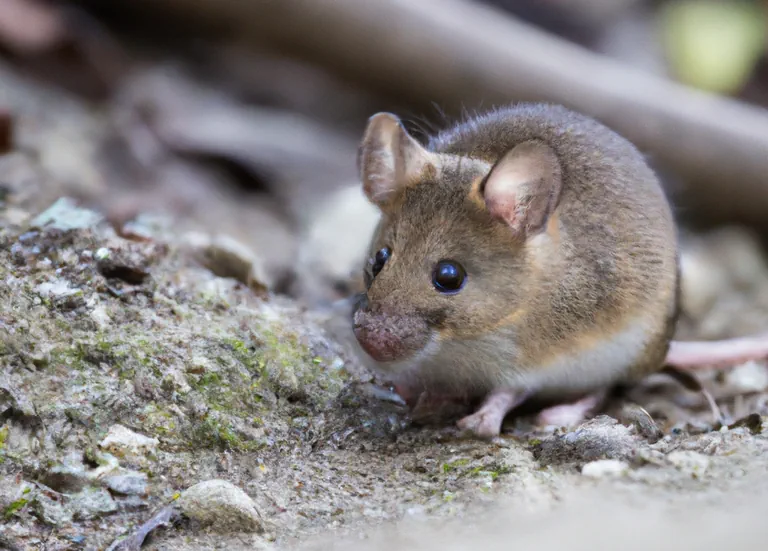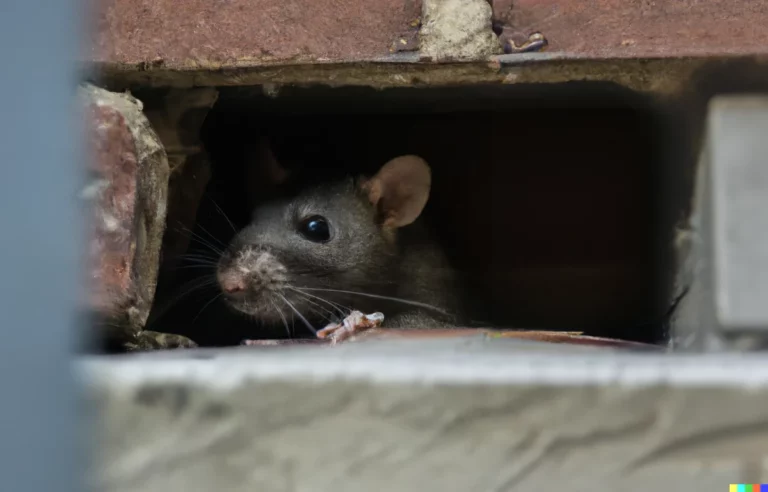Table of Contents
ToggleMany believe that mice only come out during nighttime as they’re usually seen or heard then. However, it’s possible to encounter a mouse throughout the day. The reason they’re more active at night is due to lesser risks once the sun sets.
In nature, where mice live, they discovered that the dark had less predators around. As a result, this makes it a great time to forage for food. This same idea can be used for mice living in your home. When the lights are off and everyone is sleeping, mice find it easy to look for food and make their homes without danger.
Why Do I See Mice During The Day?
You may spot a house mouse during daytime for certain reasons. These small creatures could be on their way to locations with less activity when the sun is up. Cinemas and pubs often have fewer people during the day. This makes mice more active in these places during the daytime.
Another reason mice might be seen during the day is because they have a safe route from their home to food. These creatures need to eat multiple times daily, even up to 20 times within a single day. If you see a mouse in your house, it might be searching for stored food. It could also be trying to escape danger or find a safe place.
If you’re dealing with a mouse infestation and need advice on how to identify and eliminate these pests, our blog post on how to deal with black mice in your property offers practical tips and solutions.
Do Mice Like Light?
Mice, accustomed to darkness and having poor eyesight (and a strong sense of smell), perceive light differently than humans. Their visual organs are structured to function efficiently in settings with minimal illumination. Therefore, they can see really well even in low light and complete darkness. Mice can also detect ultraviolet light, unlike humans who cannot see this type of light wave at all.
Research indicates that mice respond to bright light, despite their inability to recognize shapes. The investigation further unveils the presence of a photosensitive protein, known as melanopsin, within the ocular organs of mice. Melanopsin transmits information about the brightness in the surrounding environment to the mouse’s cerebral cortex.
Did you know that mice perceive the world at a remarkably low resolution? According to the National Institute of Health, mice have the equivalent of 20/2000 vision, giving them a unique perspective on their surroundings.
Mouse Behavior
To deter mice from causing problems, it’s good to understand their habits. Mice are nocturnal animals. This means they sleep during the day and are active at night, searching for food. This also makes them harder for people to see.
Utilizing pest control methods tailored to their habits can help ensure the elimination of these unwanted guests. You can know they are nearby by looking for tiny, dark droppings that have pointy ends. Also, listen for the sounds of running or chewing. Check for bitten food or nesting material too.
In contrast to rats, mice generally exhibit a preference for seeking sustenance within a limited proximity to their dwelling, typically ranging from 10 to 25 feet. If their needs are met, they might only venture a few feet away.

It is important to put traps and control tools where you see a lot of mice activity. This will help get rid of mice more effectively. Mice like to move along walls and edges, which is an essential factor to consider when setting up these devices.
They are curious creatures and will explore new objects within their territory. If the control mechanisms don’t work at first, try relocating them to another area.
Mice enjoy eating a range of food items. However, mice prefer seeds and grains over other options. They also enjoy eating foods high in fat and protein. Foods like nuts, bacon, butter, and candies are favorites.
Remember this when choosing bait for snap traps. Mice tend to “nibble” and can visit 20-30 various feeding spots in a single night.
Indicators of a Mouse Infestation
If you think you have a mouse problem but aren’t certain, watch for clues they usually leave behind. You might find chewed furniture or pet food bags with gnaw marks.
Other common indicators of mice or rodents are:
- Feces
- Damage to walls, wires, insulation, or other home areas
- Nests or nesting evidence like torn paper, cotton, twig, or grass bundles
- Living or deceased rodents
- Unusual noises in your attic or scratching sounds in your walls
- Strange odors
- Oily trails/grease marks along baseboards and walls where mice have traveled
If you’re dealing with a mouse problem, understanding their behavior can be very helpful. Now, if you’re wondering where these creatures hide during the day or in general, both indoors and outdoors, we invite you to read our other blog post on common places mice hide in a house. This knowledge can help you effectively get rid of mice and prevent future infestations.
Unfortunately, mice can invade homes all year long, regardless of location. Moreover, solving the issue can be challenging unless you’re certain about the type of critters in your residence.
Problems with rats and other wildlife might resemble a mice infestation. For example, raccoons and possums can make odd noises at night and eat fruit from your garden. Plus, rat droppings are strikingly similar to those left by mice.
We discussed the behavior of mice, their activity patterns, and how they perceive light. We also touched on the signs of a mouse infestation. If you’ve noticed any of these signs, it’s crucial to take the next step in addressing the issue – identifying and locating mouse nests.
In our next blog post “What Does A Mouse Nest Look Like?” , we delve deeper into this topic, guiding you on how to identify mouse nests, the implications of disturbing these nests, and effective ways of locating them.
Conclusion
Identifying and managing pests in your home can be a costly and time-consuming endeavor, especially if you lack the proper training and experience in wildlife management. Furthermore, techniques effective for preventing mice populations may prove ineffective for other pest species.
At On Demand Pest Control, we understand the challenges of dealing with pest infestations. Our team of professionals specializes in rodent control and is equipped to handle every aspect of the process. From accurate pest identification to implementing effective preventative measures, we have the expertise required to alleviate the burden and repel mice.
If you’re facing a pest issue, don’t hesitate to reach out to On Demand Pest Control. Contact us today for comprehensive and reliable pest management solutions that will bring you peace of mind.
- Have you ever wondered how mice can squeeze through the tiniest holes? This brings us to an interesting question: Do mice have bones? Let’s explore this further in our next blog.




